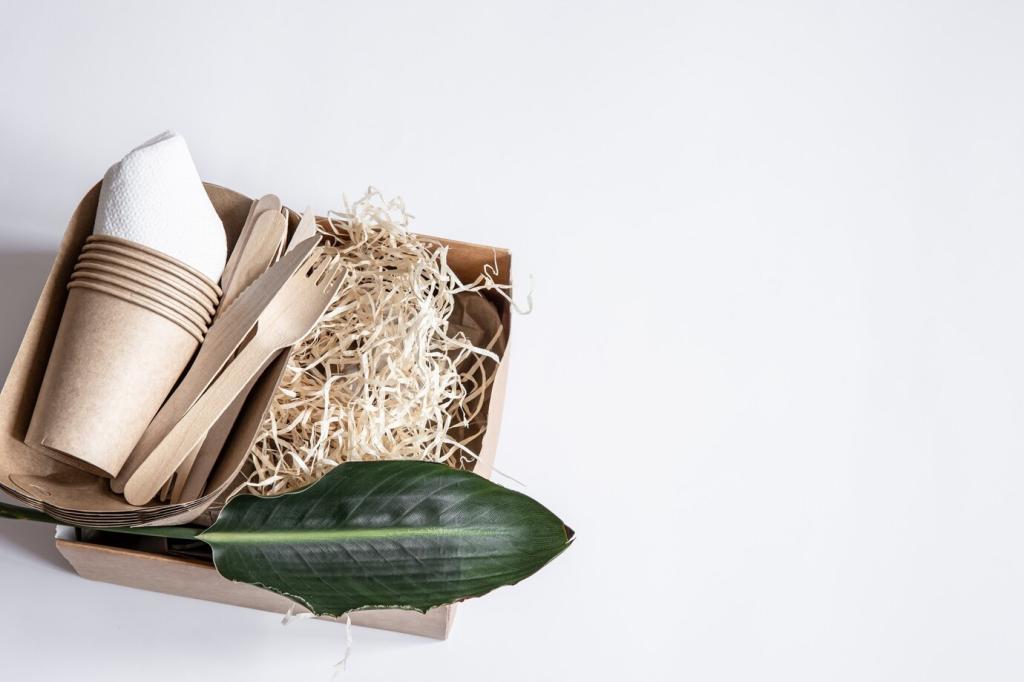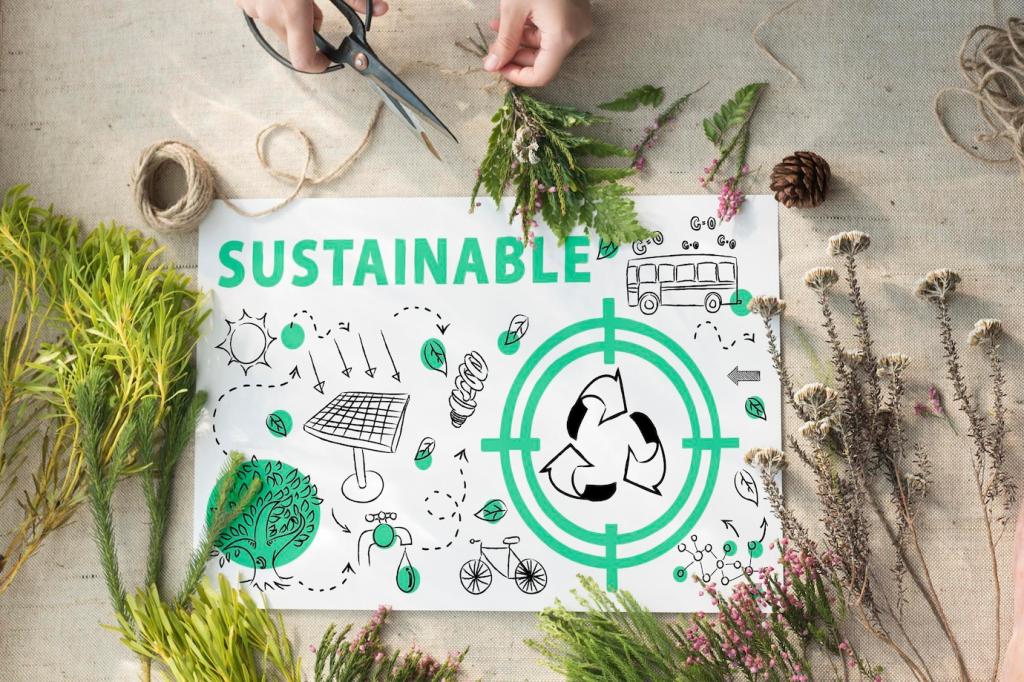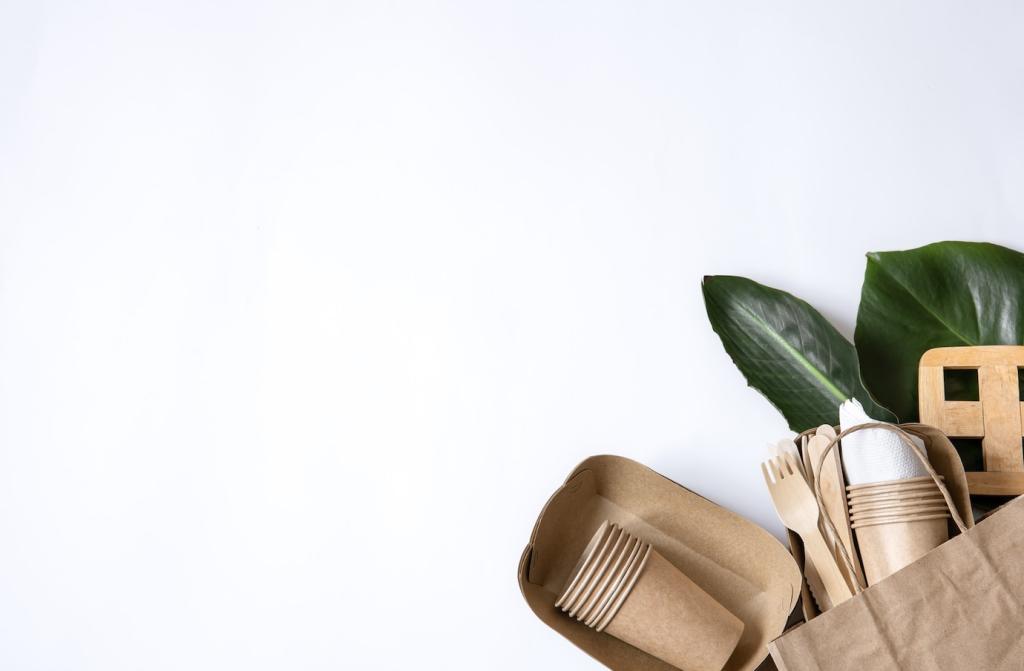
Living Beautifully with Eco-Friendly Furniture Materials
Chosen theme: Eco-Friendly Furniture Materials. Explore how thoughtful materials—sustainably sourced, low-toxicity, and designed for circularity—can transform your home into a healthier, longer-lasting, and kinder space for people and planet.

Certifications that actually matter
Look for FSC or PEFC for responsibly managed wood, GOTS and OEKO-TEX for textiles, Greenguard or UL Validated for low emissions, and Cradle to Cradle for circular principles. These signals guide you past greenwashing toward substantiated, healthier material choices.

Carbon, water, and toxicity footprints
Beyond a feel-good label, consider lifecycle impacts: harvesting, manufacturing, transport, use, and end-of-life. Materials with lower carbon intensity, responsible water usage, and reduced chemical toxicity deliver sustainability you can feel every day while sitting, sleeping, and breathing.

Durability is sustainability in disguise
A well-made piece that lasts twenty years beats a disposable bargain every time. Strong joinery, repairable components, and timeless finishes prevent replacements, conserve resources, and keep stories alive—like a reclaimed oak table hosting birthdays across decades without losing its warm character.
Responsible Woods and Fast-Growing Alternatives
FSC-certified hardwoods with traceable origins
Choose oak, maple, or walnut verified by FSC to ensure forests are regenerated, biodiversity is respected, and local communities benefit. Ask for chain-of-custody documentation and kiln-drying details to guarantee stability, longevity, and a finish that ages gracefully rather than prematurely warping.
Reclaimed and salvaged lumber with soul
Old barn beams and schoolhouse floors carry patina no factory can fake. They divert waste from landfills, reduce demand for virgin timber, and tell stories. A coffee ring on century-old pine becomes a memory, not a flaw—proof that sustainability can be deeply personal.
Bamboo: the fast-growing champion
Technically a grass, bamboo matures rapidly and can be engineered into strong panels. Seek responsibly harvested bamboo and formaldehyde-free binders. Specify strand-woven or cross-laminated formats for dimensional stability, and confirm the adhesive systems are low-VOC to protect indoor air quality.

Textiles and Leathers: Plant-Based, Clean, and Comfortable
GOTS-certified cotton, European flax linen, and fiber-dense hemp minimize pesticides, conserve soil, and deliver natural breathability. Their tactile beauty pairs with long-term comfort, especially when woven tightly and finished without chlorine, PFAS, or azo dyes that linger in indoor environments.
Zero- and low-VOC coatings
Waterborne polyurethanes, plant-based varnishes, and powder coatings dramatically reduce off-gassing. Confirm VOC ratings and cure times, and ask for Greenguard certification. Your nose will notice the difference on day one—and your lungs will thank you for years afterward.
Natural oils and hardwax blends
Linseed, tung, and sunflower oils penetrate fibers, enhancing grain while remaining repairable. Hardwax oils create resilient, matte finishes that spot-fix easily. Instead of sanding an entire tabletop, renew worn areas with a light rub—sustaining beauty with minimal materials and effort.
Adhesives and cushioning without formaldehyde
Specify water-based glues and no-added-formaldehyde resins to curb harmful emissions. Swap conventional foam for natural latex, wool batting, or CertiPUR-US foams. You get supportive comfort, reduced flame-retardant exposure, and cushions that age gracefully rather than crumbling into micro-debris.
Aluminum with high recycled content retains strength and resists corrosion, while recycled PET fabrics transform bottles into durable weaves. Verify material percentages and recyclability post-use. The goal is not just recycled inputs, but outputs that can re-enter manufacturing loops again.
Recycled and Circular Choices that Close the Loop





Care, Repair, and Real-Life Stories
Dust with microfiber, spot-clean fabrics with mild soap, and refresh oiled wood seasonally. Avoid harsh solvents and endless scrubbing. These rituals preserve finishes, protect fibers, and keep air fresh. Share your favorite care hacks in the comments so others can learn from you.
Care, Repair, and Real-Life Stories
Modular covers, zippers, and removable cushions make updates easy. Swap in organic linen for summer, wool for winter, and keep frames working for years. Post your before-and-after photos, and subscribe for our upcoming step-by-step reupholstery guide based entirely on eco-friendly materials.
